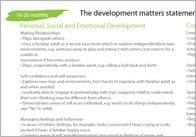Shyness, introversion and selective mutism explained

Evie and her Grandad’s canal barge: shyness, introversion and selective mutism explained
Sir Walter Scott, famed Scots author and poet, apparently didn’t speak a word until he was seven years old. One day the cook served him sausages that were slightly burned. “Take away these offensive charred items immediately!” were the first words that he is supposed to have uttered. When Scott’s astonished parents asked him why he had never spoken before, it is claimed he replied, “Well, no one has ever given me burned sausages!” After that the floodgates were opened, and he went on to write such classics as Ivinghoe, The Lady of the Lake and The Heart of Midlothian.
Whether this story is true or not, we will never know (It doesn’t get mentioned on Wikipedia, so there must be some doubt). However it’s a good story that illustrates a common misconception about quiet children: ‘If only we can get them to talk once, then they will be fine about talking in public from then on.’ The foundation for this line of thinking is that very quiet children, and particularly children with selective mutism, are in full control of their silence, and are exerting enormous willpower to refuse to talk at school.
It’s just not so. Children who are very quiet in school, and who are unhappy about it, are probably shy or are introverts. Children who are totally silent in school, but talk a lot at home with their family, may have selective mutism. What’s the difference?
A shy child is keen to join in, but is anxious about how other people might react to them having a go at something, or talking in a group. Their anxiety can be so great that it stops them from joining in.
A child who is an introvert will enjoy being with other people, and may join in, but will be energised by being on their own: to think their own thoughts and to ‘do their own thing’. Or they may operate best when working in pairs or small groups because they prefer the company of a few people at a time.
A child with selective mutism has developed an extreme anxiety about talking outside their home. They may have developed a dread of talking, or the possibility that someone will try and make them talk. They can be so anxious that they may ‘freeze’ physically and be unable even to move.
Evie and her Grandad’s canal barge
I had a bit of a ‘Walter Scott’ moment in a small infants’ school once. I was asked to do a presentation to the whole school, to celebrate Gypsy, Roma and Traveller History Month. My show was all about where people live, including bow-top wagons, caravans and canal boats. I was getting a polite reception from the children, until I brought out my model of a canal barge. Then we all got a shock. Up jumped Evie from Year 2: “My Bampy’s got a barge like that, and it’s the same colour! And he takes me fishing! And we have toast! And he lets me feed the ducks!!!” Evie had a quick look around, went bright red, and promptly sat down. There was a collective gasp from the adults (who were all smiling).
I naturally was very pleased, and started to ask Evie questions: “What’s it like being in Bampy’s boat? Has it got an engine? Etc., etc.” Nothing. Evie was steadfastly avoiding my gaze, and I felt like the lecturer who locks his eyes on a student and addresses his lecture to that unfortunate person for the entire hour.
As you can imagine, there was great excitement in the staffroom afterwards. It turned out that Evie was very quiet, and only usually spoke in small groups or one to one with an adult. Some staff were worried and thought she might have selective mutism.
So what was wrong with Evie? Well I would guess that she was a mixture of shy and introvert. Her teacher had the presence of mind to give Evie the option of painting a picture of her Bampy’s boat, or making a scale model out of cardboard. She was allowed to do both, and had plenty to say all afternoon.
The moral of the story: find out what children know about and they are likely to have plenty to say to you… just don’t push them.
For more information about quiet children read Supporting quiet children by Maggie Johnson & Michael Jones, published by Lawrence Educational.
Michael Jones is a freelance trainer in young children’s communication. He led the Every Child a Talker project in three different boroughs. He has written widely on the subject of young children’s language and learning, and is co author of ‘Let’s get talking!’ and ‘Supporting quiet children’, both published by Lawrence Educational. To find out more about Michael’s work visit //www.talk4meaning.co.uk/.
Comments
Leave a Reply
Popular Teaching Resources
Stay Up To Date
Sign up for our newsletter and we’ll let you know when we create new early years resources.






Beautifully explained!
Yet another thought provoking article Michael. Finding the key to unlocking, supporting and stimulating children’s full language potential is a challenge many face, especially in a technological world where screens and background noise are the norm.
Thanks Michael. I will use the definitions paragraph to give to settings where they encounter quiet children to introduce the differences. Could you develop it with live examples of each – ‘shy’, ‘introvert’ and ‘selective mute’ please?
Hello Libby, Clare and Abby
Thank you for your feedback. Abby I share your concern about children and technology. It has its place, but I’m not sure of its value with very young children. My next blog is about a project we have been doing with young children using wooden blocks and natural materials. It is surprising how excited they can be about some sucks, stones and a piece of fleece! It is also very reassuring to see that the Forest Schools are being so successful.
Chapel Street Nursery in Luton have been developing some of my ideas, using wooden blocks and stones to develop stories and early writing. I hope to writing a full report on this soon.
Clare, I will be very happy to write you some ‘pen portraits’ of children with various issues with quietness. Watch this space!